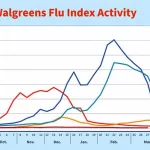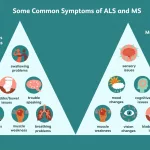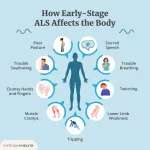Short answer: Yes—most Medicare prescription‑drug plans cover Metformin, but the exact cost you pay depends on the plan’s formulary tier, your deductible, and whether you’ve hit the “donut‑hole” threshold. Below you’ll find everything you need to feel confident that your medication is in good hands.
Quick Checklist
Before you dive into plan details, run through this short list. It’s like a friendly pre‑flight safety check—quick, easy, and it saves you from later turbulence.
| ✔️ | Item | Why it matters |
|---|---|---|
| 1 | Confirm you have a Medicare Part D or an Advantage plan with drug coverage | Only those plans cover prescription meds. |
| 2 | Look up the plan’s formulary for “Metformin” or “biguanides” | Formularies differ—some place Metformin on a low‑cost tier. |
| 3 | Check out the out‑of‑pocket cost structure (premium, deductible, copay, coinsurance) | Costs can jump dramatically after you reach the $2,000 catastrophic‑coverage threshold. |
| 4 | Verify any prior‑authorization or step‑therapy rules | A few plans ask you to try a cheaper drug first. |
Got all four? Great! Let’s unpack what those pieces actually mean.
How Medicare Works
Part D Prescription Drug Plans
Part D is the stand‑alone prescription‑drug benefit offered by private insurers. The Centers for Medicare & Medicaid Services (CMS) publishes a CMS Diabetes Drug List that identifies “biguanides,” the drug class that includes Metformin, as a covered medication. In plain English: if a plan’s formulary lists Metformin, the plan pays a share of the cost.
Most plans organize drugs into tiers. Tier 1 (often the cheapest) and Tier 2 usually cover generic Metformin at a low copay—sometimes as low as $5 for a 30‑day supply. The higher tiers (Tier 3, Tier 4) are for brand‑name or specialty versions, which most people don’t need for Metformin.
Medicare Advantage (Part C) Plans
Advantage plans bundle Part A (hospital), Part B (medical) and usually Part D (prescription drugs) into one contract. Many of them simply mirror the formulary tiering of a stand‑alone Part D plan, but some offer extra perks—like 90‑day mail‑order discounts or lower monthly premiums.
Original Medicare (A & B) Alone
Important to note: Part A and Part B do not cover oral diabetes medications. They cover things like insulin pumps, glucometers, and certain diabetes‑related supplies. That’s why you’ll need either a Part D plan or an Advantage plan to get Metformin covered.
Cost Examples
Typical Premiums & Deductibles (2025)
Here’s a snapshot of what you might see on a plan comparison site. Remember that these numbers fluctuate year‑to‑year, so always double‑check the current year’s data.
| Plan Type | Monthly Premium | Annual Deductible (max) | Metformin Copay (Tier 1) |
|---|---|---|---|
| Low‑cost generic plan | $12 | $0 | $5 per 30‑day fill |
| Mid‑tier plan (standard) | $20 | $150 | $10 per fill (after deductible) |
| High‑tier plan (brand‑name focus) | $35 | $300 | $30 per fill |
Even a “high‑tier” plan can become cheap if you qualify for the catastrophic‑coverage phase (see below).
The Donut Hole & Catastrophic Coverage
In 2025, after you’ve spent $2,000 out of pocket on prescription drugs, you enter the catastrophic phase. From that point on, Medicare picks up almost 100 % of the cost, meaning your Metformin prescription becomes essentially free for the rest of the year. If you anticipate high medication use, hitting that threshold early can be a blessing.
Choosing a Plan
Formulary Breadth & Tier Placement
When you compare plans, the first thing to look at is the formulary—essentially the “menu” of covered drugs. If Metformin sits on Tier 1, you’ll likely pay the lowest copay. If it’s on Tier 2, the cost is still modest, but a Tier 3 placement could push you into the $20‑$30 range per fill.
Prior Authorization & Step Therapy
Only a handful of plans require prior authorization for plain generic Metformin. However, if you’re looking at an extended‑release version (e.g., Glumetza), some plans may ask you to try the immediate‑release version first. If that happens, you can appeal the decision—most insurers have a simple “step‑therapy waiver” form you can fill out.
Pharmacy Network & Mail‑Order Options
Plans often give you a discount if you use a mail‑order pharmacy for a 90‑day supply. That can shave $5‑$10 off each month. If you prefer picking up your meds at a local pharmacy, make sure the plan’s network includes a convenient location—otherwise you might be charged a higher “non‑network” copay.
Star Ratings & Customer Service
CMS gives each Medicare prescription‑drug plan a Star Rating from 1 to 5. Higher‑rated plans generally have better customer service, smoother prior‑authorization processes, and fewer “surprise” cost spikes. If you’re on the fence, a plan with a 4‑star rating or higher is usually a safe bet.
Balancing Benefits & Risks
Metformin is one of the most studied diabetes drugs on the planet. The FDA approved it for type 2 diabetes back in 1994, and the American Diabetes Association still recommends it as the first‑line treatment—even for pre‑diabetes. That’s a lot of confidence in a pill.
But, like any medication, Metformin isn’t without side effects. The most common are mild stomach upset and a possible vitamin B12 deficiency over long‑term use. A tiny fraction of people experience lactic acidosis—a serious but rare condition.
Here’s where your Medicare coverage helps. Regular lab work (A1C tests, kidney function, B12 levels) can be covered under Part B, while the drug itself is covered under Part D. This separation ensures you’re not paying out of pocket for the monitoring that keeps you safe.
If you notice any bothersome side effects, talk to your prescriber. Sometimes a simple dosage tweak or switching to the extended‑release version can make a world of difference—without changing your out‑of‑pocket cost.
Switching or Enrolling in a New Plan
Open Enrollment (Oct 15 – Dec 7)
This is the annual window when you can compare every Medicare Part D or Advantage plan on Medicare.gov. Look at the formularies, premiums, and especially the “total drug cost” calculator that projects your yearly expenses based on your medication list.
Special Enrollment Periods (SEP)
Life loves to throw curveballs—moving to a new state, losing other insurance, or a change in income can qualify you for a SEP, letting you swap plans outside the usual window. If you discover your current plan no longer lists Metformin on a low tier, a SEP could be your ticket out.
Getting Help from a Counselor
Don’t go it alone. The free statewide SHIP (State Health Insurance Assistance Program) offers unbiased advisors who can walk you through the numbers. You can also call 1‑800‑MEDICARE (1‑800‑633‑4227) for quick answers. A friendly voice on the line can often spot a hidden cost you missed.
Expert Insights & Real‑World Stories
PharmD Perspective
“Metformin is a cornerstone of diabetes management and is almost universally included on Medicare drug lists,” says Isabelle Phan, PharmD, who reviews medication coverage for a major health‑information site. “Because it’s a generic, most plans place it on Tier 1, keeping co‑pays low. The key is to verify the formulary each year—some plans shuffle drugs between tiers to manage costs.”
Case Study
John, 68, was on a $30‑per‑fill Metformin plan that also charged a $150 deductible. After enrolling in a different Part D plan during open enrollment, his monthly copay dropped to $5, and his deductible was $0. Over a year, he saved roughly $400—a clear illustration of how plan selection directly impacts out‑of‑pocket spending.
Patient Testimonial
“I thought Medicare would leave me with a huge bill for my diabetes meds,” shares Mary, a recent retiree. “When I read the formulary and called my plan’s pharmacy help line, I learned Metformin was on Tier 1. Now I pay $5 a month and have peace of mind.”
Quick Reference Snapshot
| Medicare Component | Coverage Detail | Typical Cost Tier | Notes |
|---|---|---|---|
| Part D (stand‑alone) | Included in formulary (biguanides) | Tier 1‑2 | Copay $5‑$15 per 30‑day fill |
| Medicare Advantage (C) | Same as Part D, often lower premium | Tier 1‑2 | May include mail‑order discount |
| Part B | Does NOT cover oral Metformin | N/A | Covers insulin pumps, glucometers, etc. |
| VA/Other Programs | Covered under separate formulary (Tier 2) | N/A | Not part of Medicare |
Wrap‑Up
Bottom line: If you have Medicare Part D or a Medicare Advantage plan, Metformin is almost certainly covered—often on the cheapest tier. The trick is to pick a plan whose formulary places Metformin where it belongs (Tier 1), keep an eye on premiums and deductibles, and use the “donut‑hole” safety net to your advantage.
Take the checklist above, compare a few plans during open enrollment, and don’t be shy about calling a SHIP counselor for guidance. Your health, your wallet, and your peace of mind will thank you.
What’s your experience with Medicare drug coverage? Have you found a plan that makes your Metformin costs vanish? Share your story in the comments below—helping each other is what community is all about.


















Leave a Reply
You must be logged in to post a comment.